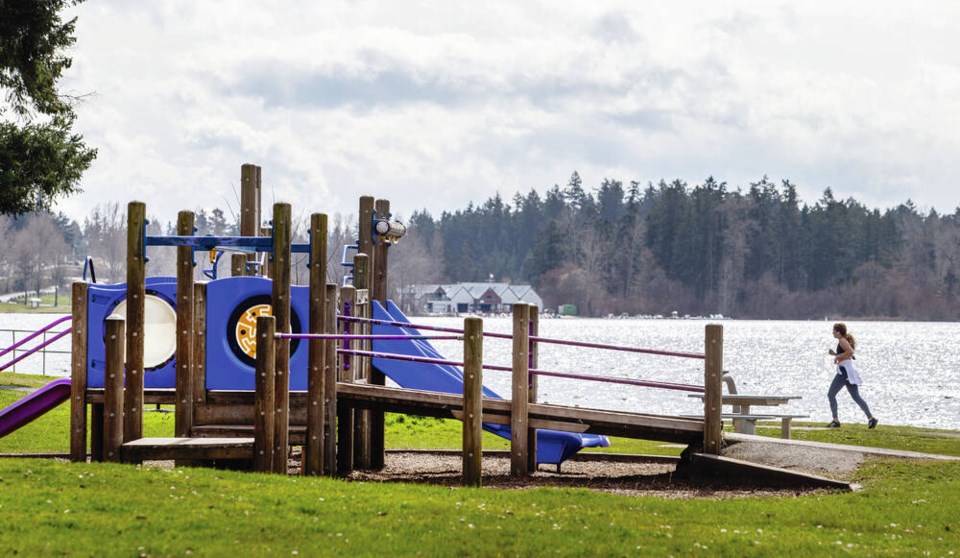Here’s a startling figure: 0.95.
As in, Greater Victoria is the only metropolitan area in Canada where the fertility rate — the number of babies a woman will have during her child-bearing years — has fallen below one.
In fact, ours is the only such area to experience more deaths than births every single year this century. Were it not for people moving here, our population would have fallen, not risen by 64,000 people as it has in the past decade.
Don Kerr sounds a bit gobsmacked by the findings. A demographer who teaches at Kings University College at Western University in London, Ont., he compiled them from Statistics Canada data for 2020.
What, he wonders, has led to this Children of Men snapshot — a cultural shift, the cost of daycare, housing prices? Note that the three census areas with the lowest birth rates in the country — Victoria, Kelowna and Vancouver — are also three of its most expensive real estate markets.
Whatever the cause, it’s part of a shift that will have big implications for the way we live: more labour shortages, fewer family members to aid the aged. “A consequence of a total fertility rate of less than 1.0?” asks Kerr. “Well, 40 or 50 years down the road, fewer 80-year-olds with a child or grandchild around to help.” No one to do chores or run errands, let alone provide good company and emotional support.
An aging, relatively childless population — Victoria has had more seniors than minors for a decade — means using a new lens to view everything from housing to recreation programming to crosswalk-light duration and dining habits. (Note that few years ago, a Food Network host mused that Victoria’s brunch scene is so vibrant because so many of us no longer want to drive at night.)
In truth, what’s happening in the Victoria census area — it goes from Sooke to Sidney — is merely an exaggerated version of a trend that has been going on in Canada for decades. The nation’s fertility rate hasn’t reached 2.1, the level needed for one generation to replace itself, without immigration, since 1971. Last year, perhaps pushed down by the pandemic, the rate hit a record low of 1.4.
Of the 35 census metropolitan areas, though, only Victoria’s rate was under 1.
It isn’t just a matter of Victoria having a disproportionately high number of old people, which it does, but of women having fewer children when they’re younger, Kerr says. Consider these numbers:
• We already knew from the 2016 census that Victoria was the most childless community in the country, with those under age 15 making up just 13.1 per cent of the population, but now that has dropped to 12.3.
• Relative to its population size, Victoria had Canada’s largest percentage decline due to “negative natural increase” in 2019-20. That is, a total of 2,842 people were born here and 3,687 died.
In Canada as a whole, a graph showing births over deaths resembles the closing jaws of a pincer, going from a difference of 200,000 a half century ago to just 52,401.
• Although Victoria’s overall population hit 409,000 last year, up from 345,000 a decade ago, the growth was due solely to people moving here from elsewhere.
• Only 23.3 per cent of Victoria’s population is under 25, compared with 28 per cent in Canada overall. “A major factor here is your long history of much below average birth rates,” Kerr says.
• Canada might have seen even fewer births were it not for the large number of millennials — the largest cohort in the country, outnumbering even baby boomers — reaching their late 20s and early 30s. The next generations will be smaller, meaning that even if the birth rate rises, the total number of babies may not.
• The number of soon-to-retire people in their late 50s and early 60s is roughly equal to the number entering the workforce. “Without immigration, we would have a major labour shortage,” Kerr says
• Victoria’s fertility rate fell from 1.3 in 2009 and 1.03 in 2019. That reflects a national trend. For decades, Canada’s rate ranged from 1.6 to 1.8. Now only the one around Brantford, Ont., is that high.
This isn’t just a Canadian thing, either. Our birth rate is much higher than many of those in east Asia: 1.05 in Hong Kong, 1.07 in Taiwan, 1.1 in Singapore. China, which infamously introduced a one-child policy in 1980, this year raised the ceiling to three.
It’s happening around the globe. “Falling fertility rates mean nearly every country could have shrinking populations by the end of the century,” the BBC reported last year. It said 23 countries, including Spain and Japan, expect to see their populations fall by half by 2100.
Oh, baby.
jknox@timescolonist.com



